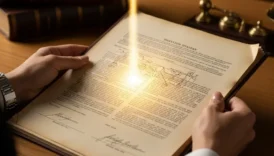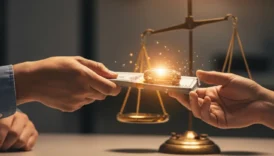What Is a Malfeasance? A Detailed Review

Meaning of Malfeasance
Malfeasance is a legal term that refers to an intentional act of wrongdoing or misconduct by a public official while performing their duties. In simple terms, it describes a situation where someone in a position of authority knowingly commits an unlawful act, abuses their power, or acts contrary to the responsibilities of their office. The key element distinguishing malfeasance from other forms of misconduct is intent — the deliberate decision to misuse one’s position for personal gain or to harm others.
In modern law, malfeasance is often associated with government officials, law enforcement officers, and corporate executives who hold fiduciary or administrative authority. When these individuals knowingly engage in actions that violate legal or ethical obligations, such as accepting bribes, falsifying records, or discriminating under color of office, they can face criminal, civil, and disciplinary consequences. The doctrine ensures that public trust remains the cornerstone of governance and that authority is never insulated from accountability.
In essence, malfeasance is not about making mistakes — it is about betraying the duty to act lawfully and in good faith.
Historical and Legal Origins
The term malfeasance originates from the Latin malefacere, meaning “to do evil” or “to act wrongfully.” It entered English common law through French legal influence during the medieval period, particularly in cases involving royal officials accused of abusing power. Over time, the concept evolved to cover a wide range of official misconduct, distinguishing between three closely related categories: malfeasance, misfeasance, and nonfeasance.
| Type | Definition | Example |
|---|---|---|
| Malfeasance | Intentional wrongdoing or illegal act | A judge accepting a bribe to influence a ruling |
| Misfeasance | Lawful act performed improperly | A police officer mishandling evidence through negligence |
| Nonfeasance | Failure to act when duty requires | A city inspector ignoring reports of unsafe buildings |
This tripartite distinction remains central to administrative and tort law, helping courts determine liability and intent. Historically, malfeasance carried the harshest penalties because it implied a conscious betrayal of public trust. As democracies matured, legal systems adopted stricter standards of accountability, reinforcing that authority is not a privilege but a conditional duty bound by ethics and transparency.
The evolution of malfeasance law mirrors the evolution of democracy itself — from monarchic privilege to public accountability.
Elements Required to Prove Malfeasance
For a prosecutor or plaintiff to prove malfeasance, several core elements must coexist. First, the accused must be a person who holds an official position or wields delegated authority. Second, the alleged act must have occurred within the scope of official duties, meaning the misconduct is tied to their professional role. Third, there must be intentional wrongdoing — a deliberate or reckless disregard for law and ethics. Finally, measurable harm or violation of duty must result, such as financial loss, infringement of rights, or erosion of public confidence.
Courts evaluate these cases by examining evidence of corrupt intent, such as forged documentation, financial benefit, or willful concealment. The burden of proof rests on establishing that the action was not an innocent error or mere negligence but a conscious abuse of authority. In many jurisdictions, this principle also extends to corporate and nonprofit governance, where executives can be held personally liable for deliberate misconduct that harms shareholders, clients, or the public.
Proving malfeasance is proving betrayal — showing that duty was not only neglected but corrupted by choice.
Practical Applications and Examples of Malfeasance
Malfeasance manifests most visibly in public administration and law enforcement, where the exercise of authority must align strictly with law and ethics. A common example occurs when a government official accepts a bribe in exchange for awarding contracts or when a police officer knowingly fabricates evidence to secure a conviction. These actions are not mere procedural violations but conscious distortions of justice. In each instance, malfeasance undermines public confidence, damages institutional legitimacy, and weakens the rule of law. Courts treat such acts as severe breaches because they combine power with deception — a combination that threatens democracy itself.
In the corporate world, malfeasance often arises in the form of embezzlement, insider trading, falsification of reports, or exploitation of employees. While these may occur in private entities, the same principle applies: those entrusted with fiduciary duty must act with honesty and loyalty. When corporate executives manipulate financial data to mislead shareholders or conceal losses, they commit malfeasance because their actions are intentional, harmful, and in violation of duty. Similarly, within nonprofit or governmental organizations, misuse of grants, misappropriation of public funds, or discriminatory hiring can constitute malfeasance if done deliberately.
Power, when exercised without accountability, becomes not a tool of service but an instrument of harm.
Distinguishing Malfeasance, Misfeasance, and Nonfeasance in Practice
While these three doctrines appear similar, the distinction between them defines how courts allocate blame and punishment. Malfeasance represents active wrongdoing — an unlawful act performed intentionally. Misfeasance reflects improper execution of a lawful duty, often due to recklessness or incompetence. Nonfeasance, by contrast, refers to failure to act when duty demands intervention. This hierarchy matters because intent dictates culpability: malfeasance involves purpose; misfeasance involves negligence; nonfeasance involves omission.
Consider the following comparative scenarios:
- A city treasurer diverting tax funds for personal use commits malfeasance.
- The same treasurer losing funds through sloppy recordkeeping commits misfeasance.
- If they ignore a discovered discrepancy, hoping it resolves itself, that is nonfeasance.
Each reflects a different moral and legal breach, and courts calibrate remedies accordingly. Malfeasance carries the highest liability because it reflects conscious corruption — the deliberate inversion of trust into self-interest.
| Doctrine | Nature of Conduct | Typical Remedy |
|---|---|---|
| Malfeasance | Intentional illegality | Criminal prosecution, removal from office, civil damages |
| Misfeasance | Improper performance | Administrative sanction, suspension, limited liability |
| Nonfeasance | Failure to act | Civil negligence or disciplinary measures |
The law distinguishes error from evil — and malfeasance belongs to the latter.
Legal Penalties and Consequences of Malfeasance
The consequences of malfeasance depend on the nature of the act and the office held by the wrongdoer. In criminal law, it can lead to felony charges such as fraud, bribery, obstruction of justice, or corruption, each carrying potential prison sentences, fines, and permanent disqualification from public office. Civil courts may impose restitution, requiring the offender to repay misused funds or compensate victims for damages. Administrative sanctions, including dismissal, license revocation, or professional disbarment, often accompany criminal or civil liability.
In addition to formal punishment, the reputational damage following a finding of malfeasance is often irreversible. Public trust, once broken, rarely recovers. In democracies, exposure of malfeasance frequently sparks wider institutional reform, prompting new anti-corruption laws, ethics committees, and transparency mechanisms. This self-correcting response demonstrates the resilience of legal systems designed to protect integrity. However, persistent or systemic malfeasance — as seen in political scandals or corporate collapses — can erode public confidence for decades, illustrating how personal misconduct can have structural consequences far beyond the individual.
The penalty for malfeasance is not only legal; it is moral — the loss of credibility that no sentence can restore.
Modern Relevance of Malfeasance in Governance
In contemporary law, malfeasance represents more than an individual crime — it symbolizes the ongoing tension between power and accountability. The digital age has expanded opportunities for both transparency and corruption, making the detection of malfeasance more complex. Public officials today operate under constant scrutiny through media, audits, and public record laws, yet new forms of misconduct emerge through data manipulation, procurement fraud, or misuse of confidential information. The challenge for modern governance is not merely punishing malfeasance but creating systems that prevent it. Compliance protocols, whistleblower protections, and independent ethics committees have become essential safeguards in this evolving landscape.
The U.S. government, for example, enforces anti-corruption statutes such as the Foreign Corrupt Practices Act (FCPA) and the Federal Bribery Statute, which criminalize corrupt acts both domestically and abroad. Similarly, local governments employ inspector generals and ombudsman offices to investigate official misconduct. These structures reflect a legal philosophy grounded in deterrence — the idea that consistent accountability discourages temptation. The same philosophy drives corporate governance reforms like the Sarbanes-Oxley Act, which holds executives personally responsible for fraudulent reporting. Together, these measures reaffirm that the integrity of institutions depends on the integrity of individuals.
Accountability is not optional in public service; it is the currency of legitimacy.
Preventing and Addressing Malfeasance
Preventing malfeasance requires an interlocking framework of education, oversight, and enforcement. Ethical training for officials and employees builds awareness of what constitutes misconduct, while strong reporting mechanisms empower others to expose wrongdoing safely. Whistleblower protections are critical — without them, fear of retaliation silences those who could uncover corruption. Many jurisdictions now employ anonymous reporting systems and offer legal immunity to whistleblowers who disclose malfeasance in good faith.
Beyond prevention, enforcement must be swift and impartial. Investigative agencies should operate independently from political influence to ensure fairness. Administrative transparency, such as open budgeting and public disclosure of conflicts of interest, reduces opportunities for hidden corruption. Within corporations, internal audit systems and compliance officers act as the first line of defense. Where prevention fails, consistent prosecution serves as the ultimate deterrent. The goal is not to eliminate wrongdoing entirely — an impossible task — but to make malfeasance the least rewarding choice a person in power can make.
| Preventive Measure | Purpose | Effectiveness Level |
|---|---|---|
| Ethics training | Builds awareness and shared values | Moderate |
| Whistleblower protection | Encourages reporting of misconduct | High |
| Independent oversight | Ensures neutrality and transparency | Very High |
| Strong enforcement | Provides deterrence through consequences | High |
A culture of integrity does not emerge by chance — it is built through consistent accountability.
Ethical Reflection and Conclusion
At its heart, malfeasance is not merely a legal concept but a moral one. It questions what individuals do when entrusted with power — whether they act for public benefit or personal advantage. The existence of laws against malfeasance acknowledges human imperfection; the enforcement of those laws represents society’s commitment to justice. In every sphere, from politics to business, the measure of leadership lies not in authority but in restraint. When a person chooses integrity over gain, they uphold the invisible contract between power and trust.
Ultimately, malfeasance endures as a warning: every act of corruption, no matter how small, weakens the structure of collective good. Its prevention requires vigilance not just from institutions but from citizens who demand transparency and ethical conduct. The future of governance will depend on how effectively we sustain this vigilance — how we remind those in power that their office is not a shield but a responsibility.
Justice begins where privilege ends — and malfeasance reminds us why that line must never blur.
Author Note
This article provides an educational overview of the legal concept of malfeasance, focusing on its definition, examples, and implications within U.S. and common law systems. It is intended for informational purposes only and does not constitute legal advice. Laws defining and penalizing malfeasance vary by jurisdiction, and specific outcomes depend on local statutes, court precedents, and individual circumstances. Readers facing issues of official misconduct should consult a qualified attorney or ethics investigator for guidance tailored to their case.
Integrity in public service is a legal expectation — not a moral option.
FAQ — Malfeasance (Legal Misconduct Explained)
What does malfeasance mean in legal terms?
Malfeasance refers to intentional illegal or wrongful conduct by someone in a position of authority. It occurs when an official knowingly violates their duty, abuses power, or acts unlawfully for personal gain. Unlike ordinary negligence, malfeasance requires deliberate intent to commit wrongdoing.
What is the difference between malfeasance, misfeasance, and nonfeasance?
Malfeasance means a deliberate unlawful act, misfeasance is the improper performance of a lawful duty, and nonfeasance is the failure to act when required by duty. Courts use these distinctions to determine intent and appropriate penalties, with malfeasance being the most severe.
Can private employees commit malfeasance, or is it only for public officials?
While the term traditionally applies to public officials, courts and regulators now extend its application to private-sector leaders, such as corporate executives and nonprofit administrators, when they intentionally violate fiduciary duties or ethical obligations.
What are the possible penalties for malfeasance?
Penalties vary depending on jurisdiction and severity but may include imprisonment, fines, restitution, loss of employment, disbarment, or permanent disqualification from holding public office. Civil lawsuits can also seek damages for financial or reputational harm.
How can organizations prevent malfeasance?
Prevention relies on ethics training, internal audits, and independent oversight. Whistleblower protections and transparent reporting systems allow early detection of misconduct. Clear accountability structures ensure that power remains checked and traceable within any institution.
Why is intent so important in proving malfeasance?
Intent separates malfeasance from mere mistakes. Prosecutors must prove that the accused acted knowingly and willfully to misuse authority or break the law. Without this mental element, the case usually falls under misfeasance or negligence rather than criminal malfeasance.
Can victims of malfeasance sue the offender?
Yes. Victims who suffer harm, financial loss, or rights violations due to malfeasance may pursue civil action. The court can order restitution, compensation, or injunctions to prevent further harm, depending on the evidence and legal framework involved.
Is malfeasance the same as corruption?
They overlap but are not identical. Corruption is a broader term encompassing bribery, favoritism, and unethical advantage. Malfeasance specifically refers to deliberate unlawful action by someone holding an official duty — it is a legal subset of corruption.






